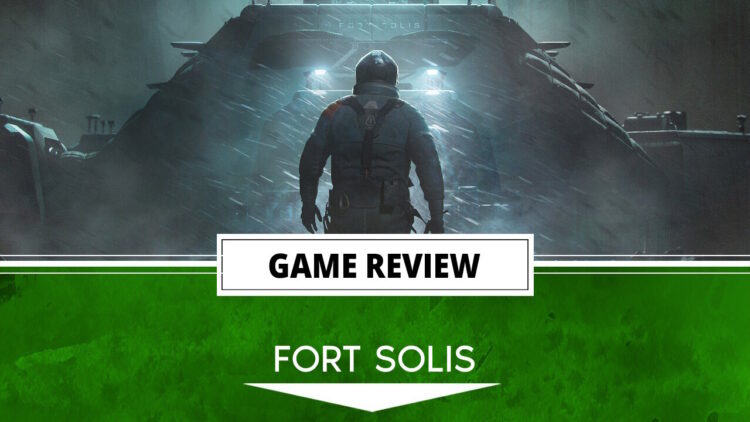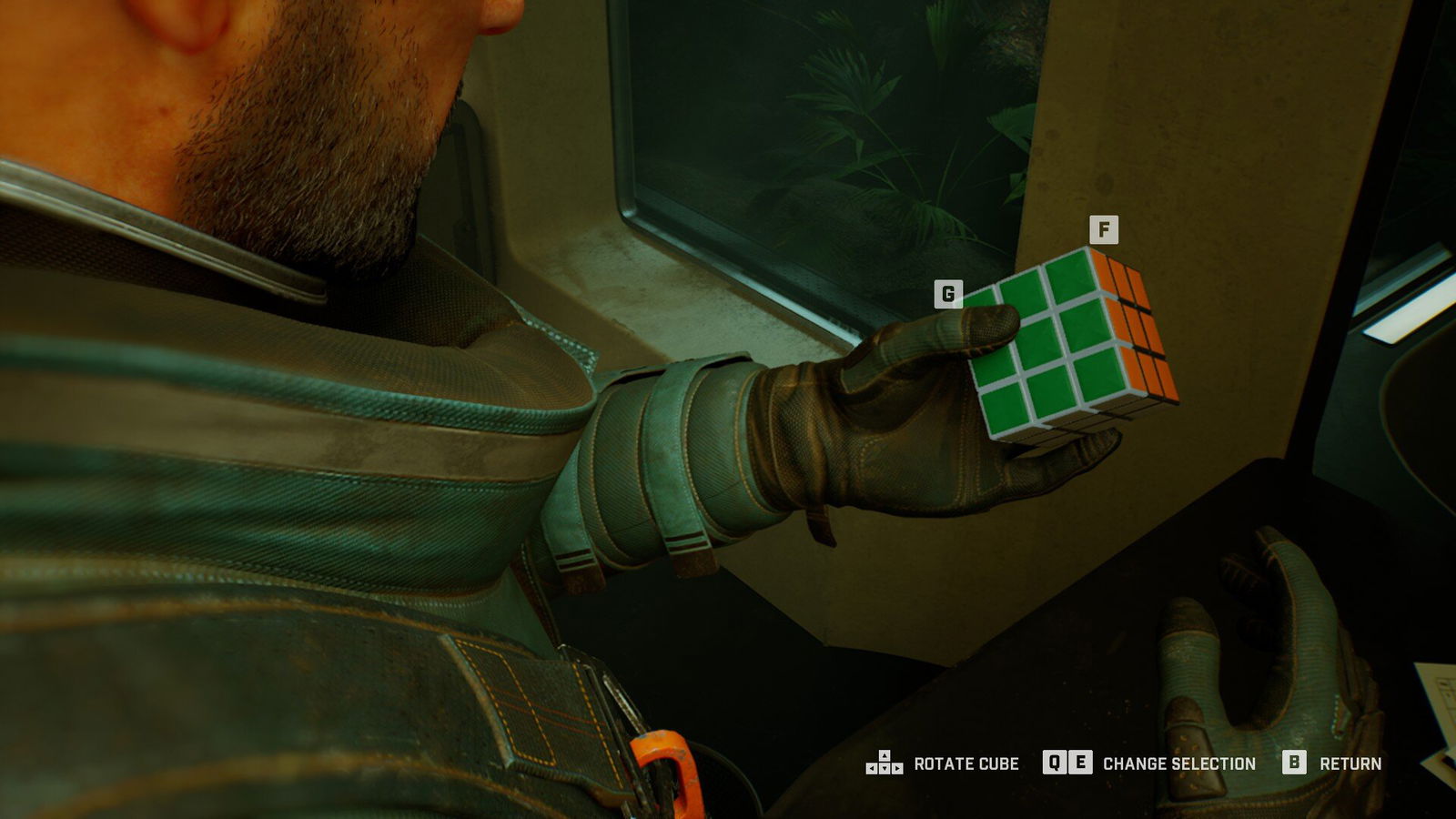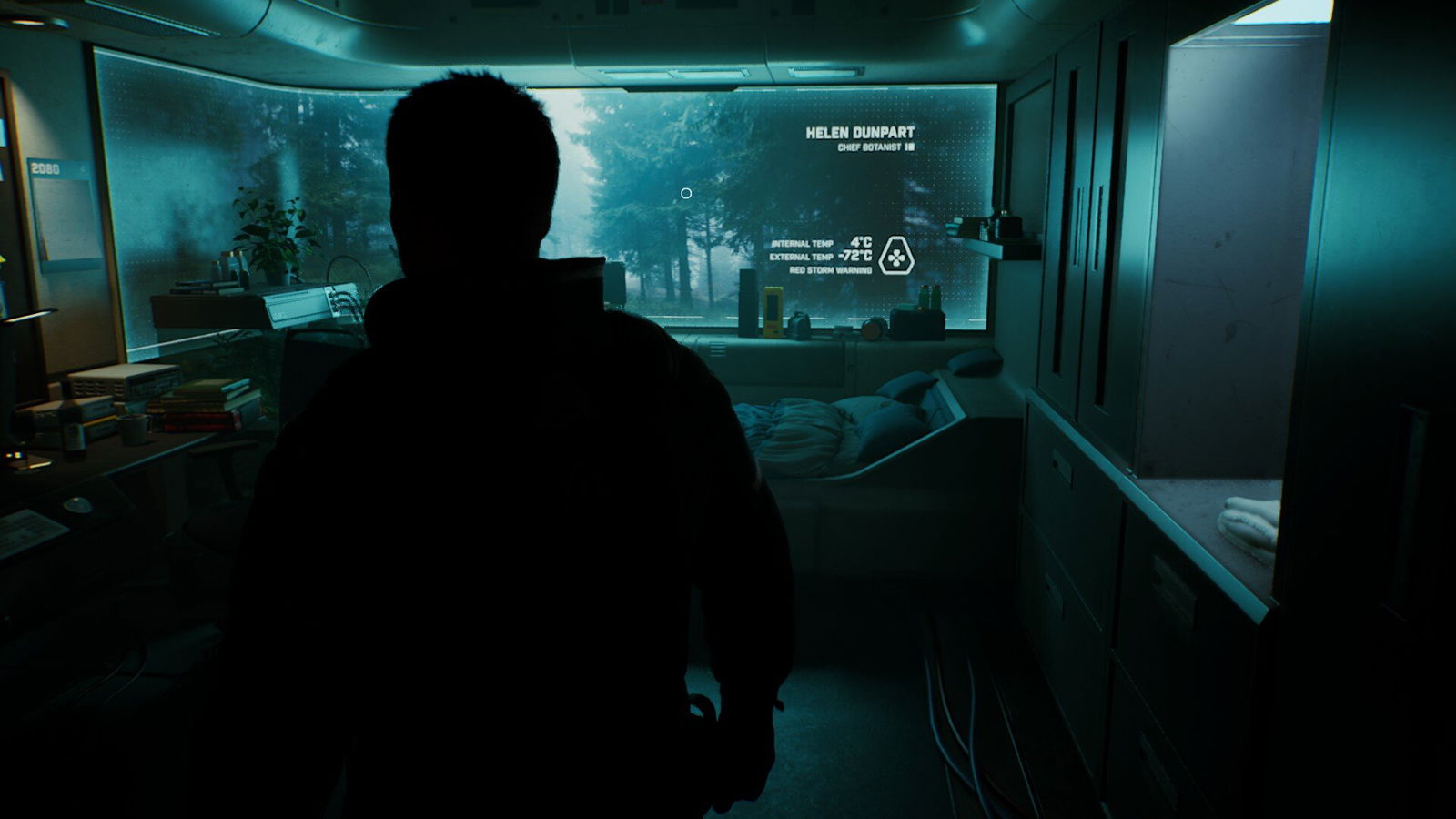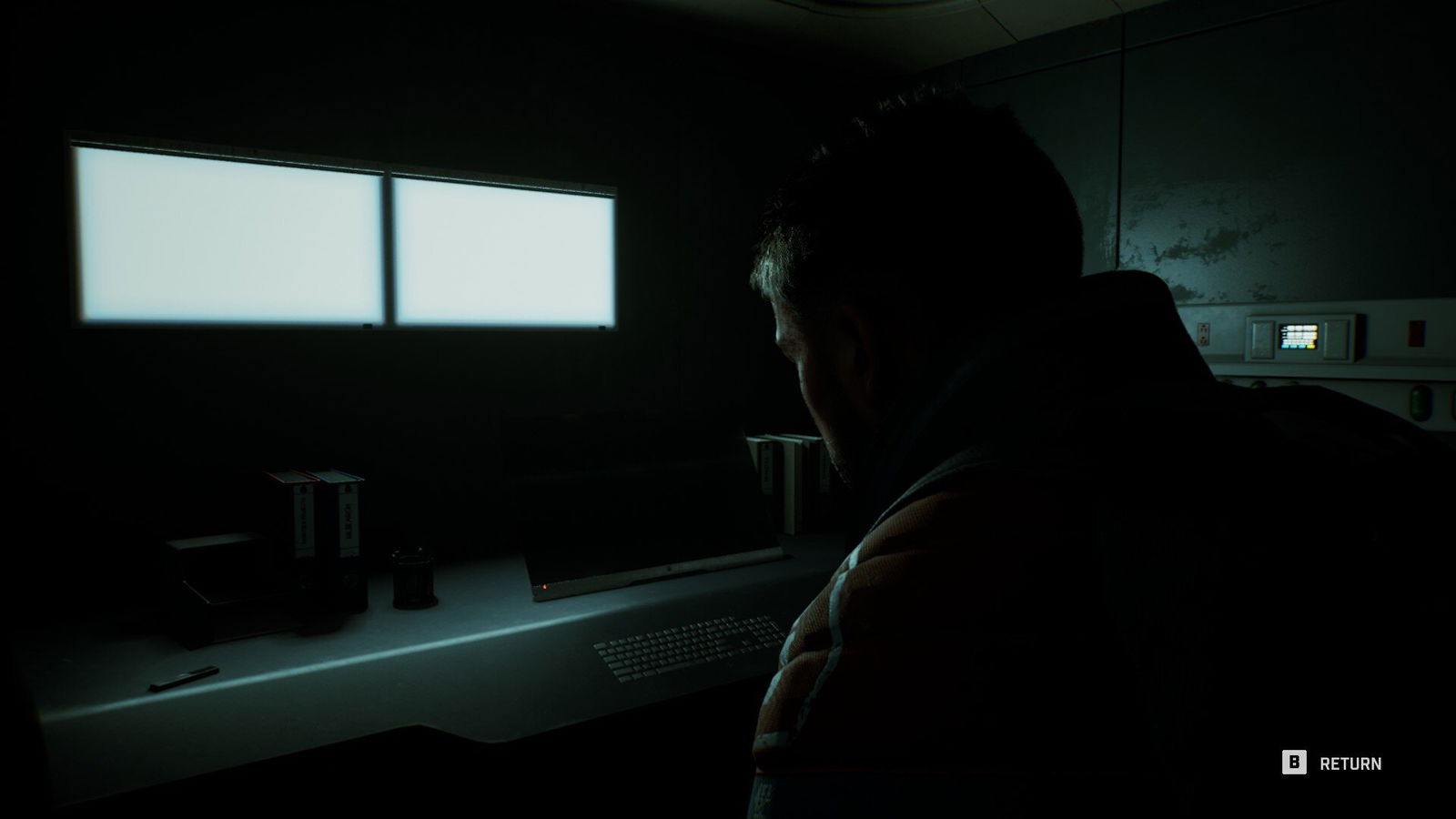Stare into the black expanse of the night sky and try to deny that outer space is an absolute treasure trove for horror media. Beyond the physical concern of being whacked by an asteroid or suffocating in a vacuum, the vast and unknown cosmos can send you into a total existential tailspin. It can remind you that you are small and you are utterly alone. This is the premise of Fort Solis, a 3rd person thriller, which takes place in this very void.
Game Name: Fort Solis
Platform(s): PC (review), PS5, MacOS
Developer(s): Fallen Leaf/Black Dakkar Games
Publisher(s): Dear Villagers
Release date: August 22nd, 2023
Price: $24.99
What a surprise that the opening cutscene of Fort Solis feels almost cozy. This debut title from Fallen Leaf opens with a sweetly mundane exchange between Jack and Jessica, two engineers on a mining outpost on the surface of Mars. They talk about a show they watched together, they complain about work and the weather. It’s kind of lovely. So, you just know it can’t last.
When the peace is broken by an alarm from Fort Solis, a neighbouring base, Jack sets off to investigate. With the entire structure under lockdown and seemingly abandoned, it becomes clear that something terrible has happened — the question is, what?
Just roving around
The high-octane action of Fort Solis’ trailer could easily mislead you into believing it’s a stealth/survival game. In truth, it takes from the David Cage school of game design, with its playtime mostly consisting of cinematic cutscenes and sections of exploration interspersed with quick-time events—a big emphasis on the cinematic part.
In addition to checking emails and video logs, you unravel much of the mystery of Fort Solis through its environmental storytelling. Every area is like a dollhouse that meticulously captures a lived-in space’s essence. There’s a surprising selection of interactable objects like a Rubik’s Cube or a bottle of beer that exist not to further the plot but just to make the space feel more organic.
Something celestial
Both Fort Solis’ indoor and outdoor environments are atmospheric and gorgeously lit, really taking advantage of Unreal Engine 5’s capabilities. It’s all very pretty, from the way Martian dust storms dynamically swallow buildings in the distance to how the cold glow of a screen cuts through a dark room. The super in-depth photo mode puts all of that beauty to good use.
Beyond just being easy on the eyes, Fort Solis offers a compelling story. Unfortunately, it does lose some steam towards the final act. Prior to that, though, it’s suspenseful and tense and subverts many of the expectations you might have for it. Added to that, Jack and Jessica’s dynamic is gold dust. The goofy quips they trade over comms feel exceptionally human and help to keep the game grounded and unpretentious. It’s evident that they’ve forged a deeper friendship than expected of co-workers. Living on Mars together will have that effect, I suppose.
What makes the dialogue really effective is the delivery. Troy Baker, Roger Clark, and Julia Brown all prove they’re not just flashy names for the credits by delivering authentic, multi-layered performances. Baker tended to veer a little more hammy than the other VAs, but it’s justifiable. By the time his character is introduced, much of the subtlety of the game’s storytelling has fallen away. Shit has well and truly hit the fan.
Houston, we have several problems
No running, no jogging, no sprinting — however you want to put it, you’ll be walking the entire time you play Fort Solis. This choice was likely made to ensure a player fully takes in all the minutiae of what the story has to offer. However, as a result, getting across the map is a crushingly slow experience. Jack has a particularly hefty feeling to his movement. He has this odd little wobble animation when he stops walking, which only adds to the sludginess. While Jessica feels a tad lighter on her feet, she still maintains a snail’s pace.
The movement speed problem is especially unfortunate since the various puzzles in the game rely so heavily on a structure of ‘go to this point, retrieve this item/press this button, then come back.’ Worst of all is when you’re misled by the dinky, poorly laid out map on your wrist and have to plod your way back to where you started. Oof.
QTEs can be a bit of an anti-climatic way to deal with what could otherwise be exciting gameplay moments. Things like combat or climbing are far more linear experiences because of it. Not to mention, Fort Solis’ QTEs are pretty poorly implemented much of the time. As there isn’t a clear correlation between the key and the action it results in, you better hope you have good reaction speed — especially if you want the good ending. Which happens to be dependent on responding to the very quick and seemingly random QTEs the game will throw at you.
Overall thoughts
All in all, Fort Solis’ gameplay is best summarised as tedious. As odd as it sounds, that’s kind of interesting conceptually. Whether intentionally or not, the gameplay embodies the back-breaking, mind-numbing nature of labour in a space colony. The ‘oh, FFS’ reaction you get while navigating the frustrating bureaucracy of your real-world day job? You’ll have that dealing with Fort Solis’ frequent backtracking and prohibitive security systems.
Still, an argument for the game’s Ludonarrative Harmony won’t save it from criticism. No metaphor can shield it from the harsh reality: Fort Solis is frequently a massive slog. It’s a beautifully cinematic slog, but a slog nonetheless.
Summary
While Fort Solis might have seemed promising, the odd design choices, such as not being able to spring or run, coupled with QTEs that otherwise ruin the gameplay, sadly sabotages the game. This is a shame as the game features some lovely visuals thanks to Unreal Engine 5, a compelling narrative, and some amazing performances from industry veterans.
Pros
- Visually stunning and graphically impressive
- Naturalistic dialogue between thoroughly likable leads
- Well-executed world-building and storytelling
Cons
- Sluggish movement artificially inflates playtime
- Story struggles with pacing issues towards the end
- Superficial, monotonous puzzles
- Obscure map UI






